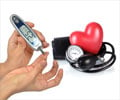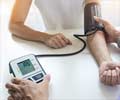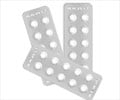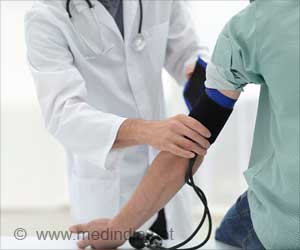Physicians in the United States control hypertension significantly better than their counterparts
Western Europe report researchers from Temple, the University of Chicago, and Stanford, have stated that, by starting treatment for high blood pressure earlier and being more aggressive, physicians in the United States control hypertension significantly better than their counterparts.
Their study findings were published in the Jan. 22, 2007, issue of the Archives of Internal Medicine.In this study based on clinic visits of more than 21,000 patients with hypertension, the researchers found that 63 percent of U.S. patients had their blood pressure under control – defined as less than 140/90 mm Hg – compared to 31 percent to 46 percent in Italy, the United Kingdom, Germany, Spain or France.
The study authors caution, however, that better blood pressure control in the United States "should not be too quickly praised." Even in the U.S., they note, nearly half of the hypertension patients did not achieve blood pressure levels that meet current guidelines. "Substantial potential for better hypertension control and future costs savings," they say, "exists in both Europe and the United States."
"We found that U.S. physicians tended to have a lower threshold for beginning treatment and were more willing to increase the dose or add other medications when patients did not respond," said lead author, Richard Wang, M.D., Ph.D., a resident in internal medicine at Temple University Hospital. "This is consistent with more aggressive treatment guidelines in the U.S."
"We also found vast room for improvement, here and abroad," said co-author G. Caleb Alexander, M.D., assistant professor of medicine and a member of the MacLean Center for Clinical Medical Ethics at the University of Chicago. "Overall, less than two-thirds of the patients reached the goals set by expert guidelines."
These deficiencies are important, he added, and suggests "we need to find ways to overcome clinical inertia, the tendency of physicians and patients to rationalize the causes of elevated blood pressure and to delay stepping up treatment."
Advertisement
They focused on four outcome measures: each patient's latest systolic and diastolic blood pressure levels, whether their blood pressure was under control, and dose escalation for patients whose pressures were not adequately controlled.
Advertisement
Although they found considerable national variation in the choices of drugs used to treat high blood pressure, these made very little difference in outcomes. "BP monitoring and regular follow-up care," they suspect, "may be more important than drug selection."
By treating sooner and more aggressively, U.S. physicians may actually save money by reducing the overall economic burden of cardiovascular disease associated with hypertension, the authors suggest. One concern about more aggressive treatment is that some patients might receive medications they don't need.
"This is a serious concern," said Alexander. "However, even in the U.S., average blood pressure before treatment was fairly high. This study confirms our impression that late treatment is common, under-treatment is not uncommon and we know there are millions of people with undiagnosed hypertension. This is an area where we can do better, with very little risk from trying harder."
Such shortfalls in bringing clinical care in line with scientific evidence, all three authors agree, are likely to extend to other prevention issues beyond the treatment of hypertension.
Source-Eurekalert
SRI











